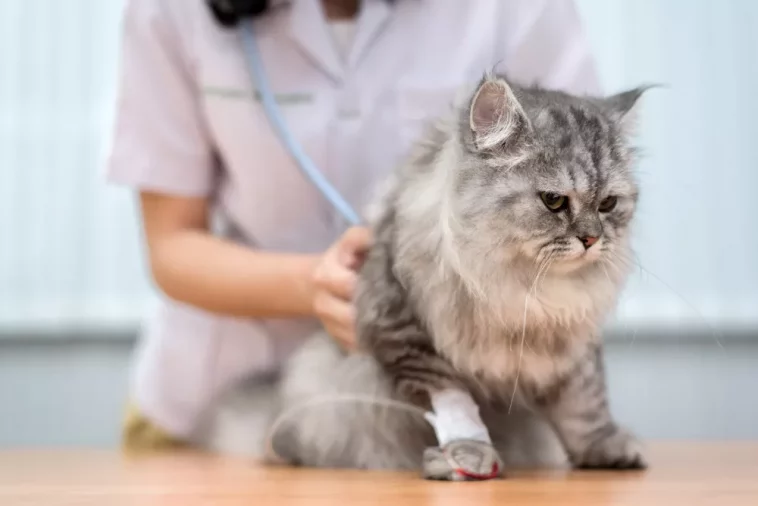Your cat’s respiratory system is very susceptible to a variety of infections from viruses, bacteria, and fungi
Loving your cat means being aware of what is normal and what is not for their well-being.
Let’s talk about the most common cat diseases.
Ear mites. These are tiny parasites that live inside your cat’s ears. Cats with ear mites usually have black debris inside their ears. When you see your cat scratching his ears, bring him to your vet for wear debris analysis. It is easily treated, but it can cause discomfort for your pet. Regular ear cleaning can also prevent this problem.
Worms. Cats get worms, too. Most common are roundworms that are transmitted from their mothers if the mommy cat is not regularly dewormed. Roundworms resemble spaghetti noodles. They can reach up to 4 inches long and can be transmitted to humans via the fecal-oral route (meaning from poop parts to mouth). Observe how your cat grooms his butt area, and you will see what I mean.
Other types of worms are hookworms and tapeworms. If your cats have fleas, have them treated for fleas and deworm them because fleas are carriers of tapeworm. It is recommended to have your cats dewormed every three to five months.
Worm infestation can cause many symptoms like diarrhea, bloody stool, constipation, weight loss, and coughing in the case of lungworms. Lungworms, which they get from snails, reside in cats’ lungs. Keeping your cat indoors is a good way to prevent this, but cats need outdoor fun, too, so make sure to keep your garden clean.
Heartworm can also infect your cat, as it does outdoor dogs. For cats, it’s not their heart but their lungs that get affected. They get respiratory problems like coughing. Cats can get heartworm from mosquito bites. Ask your vet for prevention management.
Ringworms. These are not worms but fungal infections on the skin, hair, and nails of your cats. It is very common in cats and may cause patches of hair loss.
Upper respiratory tract infections. Your cat’s respiratory system is very prone to a variety of infections from viruses, bacteria, and fungus. The feline calicivirus and feline herpesvirus (not contagious to humans) account for 80 percent of the most common respiratory infections in cats. It is very important to have your cats vaccinated, especially if you have more than three cats in your household.
Feline immunodeficiency virus (FIV). This attacks the cat’s immune system and, unfortunately, there’s no vaccine for it. Signs of FIV include anemia, weight loss, poor coat condition, inflammation of the mouth, and dental disease.
FIV is commonly transmitted via bite wounds, but can also be transmitted from the mother cat. Cats with FIV are very prone to secondary infection. There are available tests to check if your cat has FIV.
Feline leukemia virus (FeLV). FeLV is a disease that attacks the white blood cells of your cat. It disables your pet’s immunity to fight all sorts of infections, even cancer. The virus sheds through body fluids, saliva, feces, and blood. Signs of FeLV are loss of appetite, vomiting, diarrhea, eye problems, yellowing of the skin, and enlarged lymph nodes.
FeLV and FIV infections in cats should be well discussed with your veterinarian for proper management.
Cat diseases are very complicated, but loving our cats means knowing what we can do to prepare to help them.



